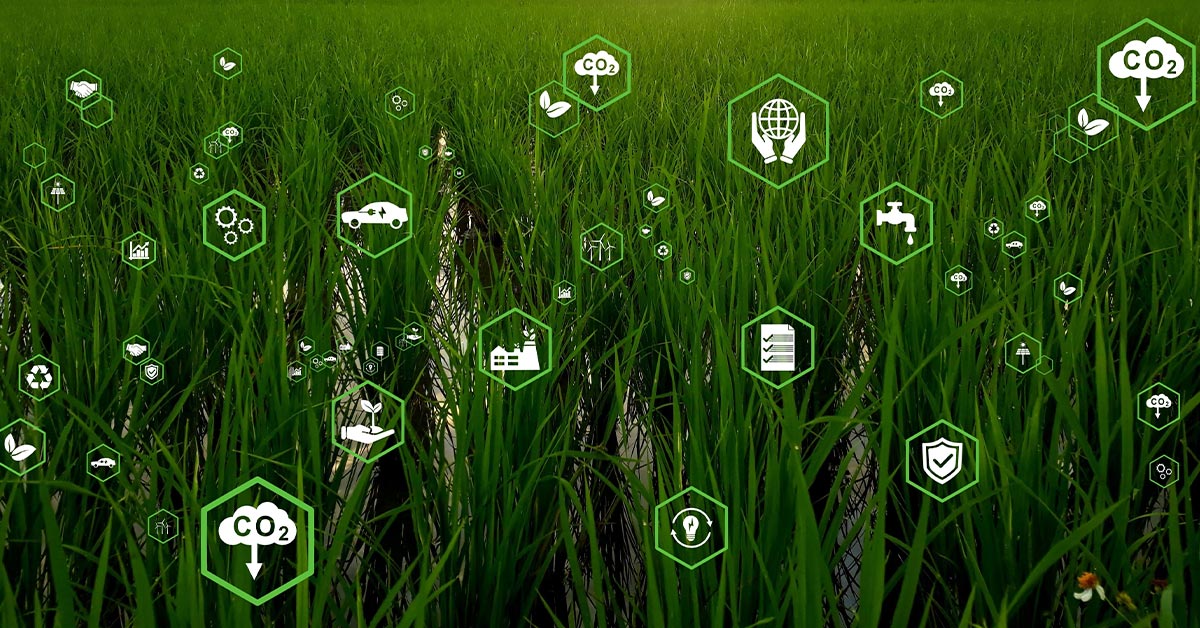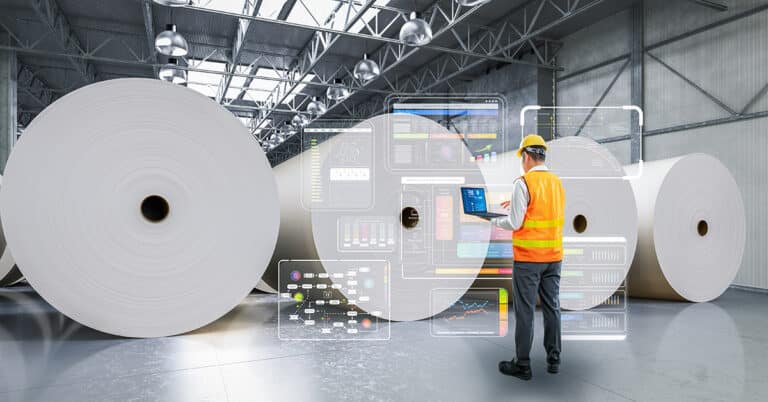The idea of sustainability in production facilities has been gaining a lot of traction lately. Companies are swapping to greener technologies and reducing their carbon emissions, and the market is responding. These eco-friendly changes can also come with a boost to your bottom line.
For production facilities, this means upgrading your manufacturing processes and maintenance tasks. There are a number of simple and more complicated changes that your company can make in an effort to become more sustainable. In this guide, you’ll learn more about these changes, their impact on your business and how to get started today.
What is sustainability in production?
What is sustainability in production? You might have heard this referred to as “eco-friendly” or “green” manufacturing in the past. Sustainability in production means looking at the environmental impact of your product, processes and operations. It typically involves making small changes that add up to make a big change to the environment.
For example, you might swap from raw aluminum to partially recycled aluminum for the metal containers that you make. Just like that, you’re making and selling a greener product.
For production facilities, sustainability can come from your supply chain and logistics partners, but the best-case scenario is to change your manufacturing and maintenance operations. These tend to have the bigger impact, and they’re two aspects you have more control over.
How to implement sustainable production methods
The path of transitioning your business into a sustainable production facility looks different from company to company. To speak broadly, implementing sustainable production methods is a result of embracing a changing manufacturing landscape. It’s no different than looking into Industry 5.0 methodology or upgrading your technology to modernize your operation.
There are a few common ways to increase manufacturing sustainability:
Implement new mindsets
Changing a business can come with a lot of pushback and reluctance. One way to manage these reactions is through gradual mindset changes.
These changes in mindsets should start from the top level and fall down the org chart. In other words, your decision-makers need to make the shift from focusing on pure profit, to focusing on sustainability as well. Of course, your company should still be profitable after these changes, but this slight difference can dramatically increase your success.
With a changed mindset, your workers will have a new lens with which they look at the operation. From there, they can find more areas that could use a boost in sustainability, further improving your company’s overall eco-friendliness.
For example, look at the idea of recycling. Any production facility that uses raw material to make a part should look at how they handle their scraps and defects. Instead of throwing away a container of scrap material, is there a way to recycle it back into your process and reuse it?
Document your change management processes
After a changing mindset, you have to look at specific processes in your operation. Again, this largely revolves around how you manufacture your product and maintain the systems. Identify some problem areas and put together a roadmap for how you want to deal with these areas in the future.
This is a good time to point out that you don’t need to fully revamp your operations and change everything today in the name of sustainability. This could be done over the next years and decades.
By documenting your change management processes, you’re creating a vision for how you want these changes to be made and the rough timespan that you want to see the changes.
This document can change over time, so don’t think you’re making the final decision today.
Look at your technology, packaging, operations and maintenance
In our experience, there are four major places that you can improve your company’s sustainability: the technology you use, the packaging you use, your physical operations and how you handle maintenance.
To make sizable changes to your overall sustainability, start with these four categories. Take a close look at how you handle things today, and ask yourself where you can recycle, reduce and reuse material in an effort to become more eco-friendly.
How to measure sustainability performance
Most people might be confused when it comes to tracking their sustainability. Can you simply start recycling scrap material and consider your work done? Even so, how do you quantify your changes?
When a team wants to evaluate and track the success of their sustainability programs, a lot of companies develop a “sustainability scorecard.” This simple document will look at specific metrics before and after you make your manufacturing and maintenance changes, and then determine if the changes were successful or not. It’s one of the most effective ways to track sustainability.
Your sustainability scorecard is specific to your company, but here are a few options for how to measure sustainability performance within your company:
Utility costs
How much energy are you using to run your operation? With less energy spent, your company is, by definition, a greener company. For that reason, a quick and easy number to track is your utility costs, specifically how much electricity, gas and oil your company goes through each month. For instance, swapping to solar panels will reduce how much electricity you spend.
After making your green changes, these costs should all go down.
Asset value
Your property’s asset value is a little trickier to understand how it relates to sustainability. To put it simply, your property’s value should rise after you implement sustainable upgrades and changes, such as swapping to more energy-efficient water heaters, HVAC systems or boilers. Tracking the value of your site gives a hint into how well your sustainability efforts are working.
Maintenance costs
Tracking your maintenance costs is a clear indicator of how well your eco-friendly systems are working. Modern buildings and updated systems will require less frequent maintenance, and there will be fewer expensive repairs that need to be done. Most of the time, lower monthly maintenance costs equate to a more sustainable production system.
Using condition monitoring in sustainability applications
We’ve mentioned that upgrading your maintenance operations can help with your company’s sustainability, but how is that possible? Most companies achieve this through a machine condition monitoring system, which is a condition-based monitoring system.
These systems will track data such as temperature deviations, vibration, environmental changes and pressure changes, all through specific sensors. If the sensor detects an abnormal change, your maintenance team will get an alert to fix the machine before a catastrophic failure.
With this preemptive maintenance, you can quickly cut down on your carbon footprint by reducing emissions and stopping leaks before they get worse. At the same time, you’re minimizing downtime, preventing more expensive problems and optimizing your maintenance schedules.
Conclusion
You just learned that maximizing the sustainability of your production operation might not be as difficult as it sounds. You can see improvements that are as simple as adding a monitoring system to your machines. Small changes to your machines, buildings and mindset can lead to massive changes to your carbon footprint.
For a personalized plan to maximize your sustainability, consider ATS. Our team can help you optimize your maintenance and minimize your downtime. Get started today.






